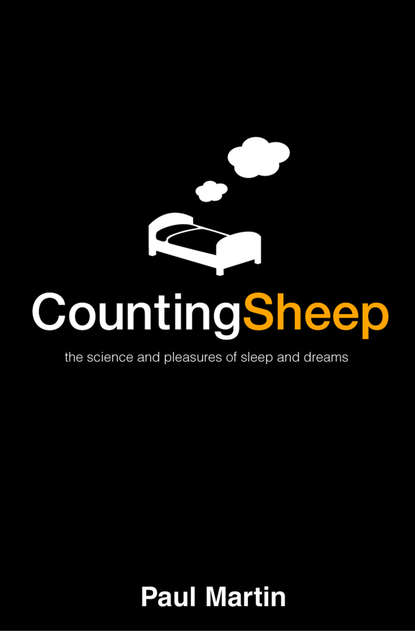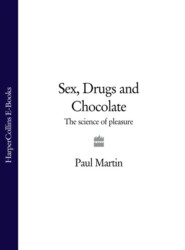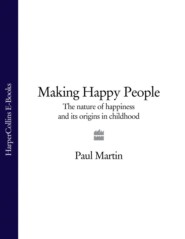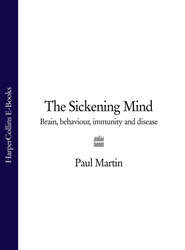По всем вопросам обращайтесь на: info@litportal.ru
(©) 2003-2024.
✖
Counting Sheep: The Science and Pleasures of Sleep and Dreams
Настройки чтения
Размер шрифта
Высота строк
Поля
Praise (#litres_trial_promo)
Also by the Author (#litres_trial_promo)
About the Publisher (#litres_trial_promo)
PART I Preliminaries (#ulink_d19660b1-89c0-5a86-8526-91b26e8f214f)
1 A Third of Life (#ulink_31cf6e27-a8e6-5a49-86cd-f1af9fe822b4)
Man … consumes more than one third of his life in this his irrational situation.
Erasmus Darwin, Zoonomia (1801)
Sleep: a state so familiar yet so strange. It is the single most common form of human behaviour and you will spend a third of your life doing it – 25 years or more, all being well. When you die, a bigger slice of your existence will have passed in that state than in making love, raising children, eating, playing games, listening to music, or any of those other activities that humanity values so highly.
Sleep is a form of behaviour, just as eating or socialising or fighting or copulating are forms of behaviour, even if it is not the most gripping to observe. Most of the action goes on inside the brain. It is also a uniquely private experience, even when sharing a bed. When we are awake we all inhabit a common world, but when we sleep each of us occupies a world of our own. Most of us, however, have precious little awareness of what we experience in that state. Our memories of sleeping and dreaming mostly evaporate when we awake, erasing the record every morning.
Many of us do not get enough sleep and we suffer the consequences, often without realising what we are doing to ourselves. The demands of the 24-hour society are marginalising sleep, yet it is not an optional activity. Nature imposes it upon us. We can survive for longer without food. When our sleep falls short in quantity or quality we pay a heavy price in depressed mood, impaired performance, damaged social relationships and poorer health. But we usually blame something else.
Sleep is an active state, generated within the brain, not a mere absence of consciousness. You are physiologically capable of sleeping with your eyelids held open by sticking plaster, bright lights flashing in your eyes and loud music playing in your ears. We shall later see how science has revealed the ferment of electrical and chemical activity that goes on inside the brain during sleep, and how the sleeping brain operates in a quite different mode from waking consciousness. We shall see too how lack of sleep erodes our quality of life and performance while simultaneously making us more vulnerable to injuries and illness. Science amply supports William Shakespeare’s view that sleep is the ‘chief nourisher in life’s feast’.
What is sleep and what is it for? Why do so many people have such problems with it? Why do we dream? Although sleep forms a central strand of human and animal life it is still poorly understood and widely neglected. It is an inglorious example of familiarity breeding contempt. Sleep is so much a part of our everyday existence that we take it for granted. We are ignorant even of our ignorance. In 1758, Doctor Samuel Johnson summed it up like this:
Among the innumerable mortifications that waylay human arrogance on every side may well be reckoned our ignorance of the most common objects and effects … Vulgar and inactive minds confound familiarity with knowledge, and conceive themselves informed of the whole nature of things when they are shown their form or told their use … Sleep is a state in which a great part of every life is passed. No animal has been yet discovered whose existence is not varied with intervals of insensibility. Yet of this change so frequent, so great, so general, and so necessary, no searcher has yet found either the efficient or final cause; or can tell by what power the mind and body are thus chained down in irresistible stupefaction; or what benefits the animal receives from this alternate suspension of its active powers.
The scientists who do know something about sleep often bemoan society’s ignorance of it. They point to the vast gap between current scientific understanding of sleep, patchy though it is, and the practical benefits it could bring if that knowledge were absorbed and acted upon by society. Our collective indifference towards sleep has enormous and largely avoidable costs.
A sleep-sick society? (#ulink_2011d958-bc4c-5573-9ede-d62f2c781ff1)
The mere presence of an alarm clock implies sleep deprivation, and what bedroom lacks an alarm clock?
James Gleick, Faster (1999)
All is not well with the state of sleep. Many of us depend on an alarm clock to prise us out of bed each morning, and children’s bedrooms increasingly resemble places of entertainment rather than places of sleep. When given the opportunity, we sleep in at the weekends and feel only half awake when we do get up. On that long-awaited holiday we find the change of scenery (or is it the air?) makes us even sleepier. We are told that lying around and sleeping too much will only make us sleepier. But in truth we feel sleepy at weekends and on holidays not because we are sleeping too much, but because we have slept too little the rest of the time.
A century ago the majority toiled long hours while the affluent few idled away their time. Today, however, the more conventionally successful you are, the less free time you will probably have. Having nothing to do is seen as a sign of worthlessness, while ceaseless activity signifies status and success. Supposedly unproductive activities are deprioritised or delegated. And according to prevailing cultural attitudes, sleeping is one of the least productive of all human activities – more worthwhile perhaps than sitting around picking your nose, but not much. In their ceaseless pursuit of work and pleasure the cash-rich buy time from others, hiring them to clean their houses, look after their children and cook their food. But one of the activities you simply cannot delegate to anyone else is sleeping.
Evolution equipped humans, in common with all other animals, with biological mechanisms to make us sleep at roughly the same time every day. However, those mechanisms evolved to cope with a pre-industrial world that was vastly different from the one we now inhabit.
Our daily cycles of sleep and activity are no longer driven by dawn and dusk, but by clocks, electric lighting and work schedules. Sleep has become increasingly devalued in the 24-hour society. Many regard sleep as wasted time and would prefer to sacrifice less of their busy lives to it. We live in a world where there are too many tired, sleep-deprived people. Think of those pinched, yawning faces you can see every day on the trains and in buses and in cars crawling through jams. They look as if they have been brainwashed, but they are just tired.
We pay a steep price for neglecting sleep, in our ignorance and indifference. The scientific evidence tells us that far too many people in industrialised societies are chronically sleep-deprived, with damaging consequences for their mental and physical health, performance at work, quality of life and personal relationships. William Dement, a pioneering scientist in the field, believes that we now live in a ‘sleep-sick society’. Scientists have not yet reached a consensus about the precise extent of sleep deprivation in society, but they do all agree that sleepiness is a major cause of accidents and injuries. In fact, sleepiness is responsible for far more deaths on the roads than alcohol or drugs.
Everyone has heard about the need for a balanced diet and physical exercise, even if many of us fail to follow the advice. But sleep is lost in a deep well of ignorance and apathy. Even the medical profession pays it scant regard. Sleep and its disorders barely feature in the teaching of medicine, and few physicians are fully equipped to deal with the sleep problems they regularly encounter. When researchers from Oxford University investigated British medical education in the late 1990s, they discovered that the average amount of time devoted to sleep and sleep disorders in undergraduate teaching was five minutes, rising to a princely peak of 15 minutes in preclinical training. Your doctor is therefore unlikely to be an expert on the subject.
The general public and the medical profession are not the only ones to display a remarkable indifference to sleep. So too do most contemporary writers. Considering that sleep accounts for a third of human existence, it features remarkably rarely in novels, biographies, social histories or learned texts on neurobiology, psychology and medicine. And the few accounts that have made it into print are mostly concerned with what happens when it goes wrong. Insomnia and nightmares loom large in the tiny literature of sleep.
Few biographies mention the sleep behaviour or dreams of their subjects. That part of their story is almost invariably missing, as if somehow we all cease to exist at night. And most of those scholarly books that set out to explain how the human mind works say little or nothing about what goes on during the several hours of every day when the mind is sleeping and dreaming. They are really just books about how the brain works when it is awake. Our neglect of sleep is underlined by its absence from our literature.
Vladimir Nabokov once said that all the great writers have good eyes. What has happened to the eyes of writers as far as sleep and dreams are concerned? It was not always so. Older literature is distinctly richer in references to sleeping and dreaming, perhaps because darkness and sleep and dreams were much more prominent aspects of everyday life before the invention of the electric light bulb and the advent of the 24-hour society. Shakespeare’s works are thick with allusions to sleep and dreams, as are Dickens’s. We shall encounter some of them later. Meanwhile, to set the right tone, here is Sancho Panza’s eulogy to sleep from Don Quixote:
God bless the inventor of sleep, the cloak that covers all man’s thoughts, the food that cures all hunger, the water that quenches all thirst, the fire that warms the cold, the cold that cools the heat; the common coin, in short, that can purchase all things, the balancing weight that levels the shepherd with the king and the simple with the wise.
The universal imperative (#ulink_3acf04c4-0b0c-541e-974a-051f57e446a0)
Almost all other animals are observed to partake of sleep, aquatic, winged, and terrestrial creatures alike. For every kind of fish and the soft-shelled species have been seen sleeping, as has every other creature that has eyes.
Aristotle (384–322 BC), On Sleep and Waking
Sleep is a universal human characteristic, like eating and drinking. Absolutely everybody does it. Sleep occupies about one third of each human life, and up to two thirds of a baby’s time. (According to Groucho Marx, the proportion rises to three thirds if you live in Peoria.) It is a common bond that ties us all together. We have no choice: the longer we go without sleep, the stronger our desire for it grows. Tiredness, like hunger and thirst, will eventually force us to do the right thing whether we want to or not.
The dreams that accompany sleep are equally ubiquitous features of human life, even if many of us retain little memory of them after we awake. Dreaming is a classless activity that unites monarchs and paupers, a thought that Charles Dickens mused upon in one of his essays:
Here, for example, is her Majesty Queen Victoria in her palace, this present blessed night, and here is Winking Charley, a sturdy vagrant, in one of her Majesty’s jails … It is probable that we have all three committed murders and hidden bodies. It is pretty certain that we have all desperately wanted to cry out, and have had no voice; that we have all gone to the play and not been able to get in; that we have all dreamed much more of our youth than of our later lives.
Sleep is not a specifically human trait, of course. On the contrary, it is a universal characteristic of complex living organisms, as Aristotle deduced more than 23 centuries ago. Sleep is observed in animals of every sort, including insects, molluscs, fish, amphibians, birds and mammals. Within the animal world, sleep does vary enormously in quantity, quality and timing, accounting for anything up to 80 per cent of some animals’ lifespans. But they all do it, one way or another. Some species, especially predators, spend more of their lives asleep than they do awake, a fact that TV documentaries and natural-history books seldom mention.
How do we know that an animal is sleeping? It is hard enough sometimes to be sure that a human is asleep, let alone a fish or a fly. The ultimate indicator of whether an animal or person is asleep is the distinctive pattern of electrical activity in its brain. During deep sleep the billions of individual nerve cells in the brain synchronise their electrical activity to some extent, generating characteristic waves of tiny voltage changes that can be detected by electrodes placed on the scalp. We shall be exploring the nature and internal structure of sleep later. The easiest way to recognise sleep, however, is from overt behaviour.
Sleep has several rather obvious distinguishing characteristics. A sleeping person or animal will generally remain in the same place for a prolonged period, perhaps several hours. There will be a certain amount of twitching, shifting of posture and fidgeting. Young animals will suckle while they sleep and ruminants will carry on chewing the cud. But sleepers normally do not get up and change their location. (When they do, we recognise it as a curious phenomenon and call it sleepwalking.)
Sleeping organisms also adopt a characteristic posture. Sloths and bats, for example, sleep hanging upside down from a branch. The Mediterranean flour moth sleeps with its antennae swivelled backwards and the tips tucked under its wings. If you are careful, you can gently lift the sleeping moth’s wing without disturbing it – a trick that will definitely not work when it is awake. A lizard will settle on a branch during the hours before sunset, curl up its tail, close its eyelids, retract its eyeballs and remain in that distinctly sleep-like posture all night unless it is disturbed. A partridge, like many birds, will rest its weight on one leg while it sleeps. It is said that some gourmets can tell which leg, from its taste.
Monkeys and apes, including humans, usually sleep lying down. Indeed, we are built in such a way that we find it difficult to sleep properly unless we are lying down. People can and sometimes do sleep after a fashion while sitting, notably in aeroplanes, business meetings and school classrooms. If you are really exhausted, you might even manage to snatch some sleep standing up. But sleep taken while standing or sitting upright is generally fitful, shallow and unrefreshing. The non-horizontal sleeper may repeatedly nod off, but as soon as they descend beyond the shallowest stages of sleep their muscles relax, they begin to sway and their brain wakes them up again. That is why we ‘nod off’. If you travel frequently on trains or buses, you might have had the dubious pleasure of sitting next to a weary commuter who has nodded off all over your shoulder. Recordings of brain-wave patterns show that people sleeping in an upright sitting position achieve only the initial stages of light sleep, not the sustained, deep sleep we require to wake up feeling truly refreshed. The reason is simple. Our muscles relax when we are fully asleep and we would fall over if we were not already lying down. Our brains therefore do not permit us to enter sustained, deep sleep unless we are in a physically stable, horizontal (or near-horizontal) posture.
Despite the virtual impossibility of sleeping deeply while sitting upright, we are sometimes forced to try. In Down and Out in Paris and London, George Orwell describes a particularly unwelcoming form of overnight accommodation that was known to the homeless of prewar London as the Twopenny Hangover. At the Twopenny Hangover the night’s residents would sit in a row along a bench. In front of them was a rope, and the would-be sleepers would lean on this rope as though leaning over a fence. In that posture they were supposed to sleep. At five o’clock the next morning an official, wittily known as the valet, would cut the rope so that the residents could begin another day of wandering the streets.
Nowadays, tourist-class airline passengers travelling long distances can enjoy an experience similar to the Twopenny Hangover, albeit at vastly greater expense. George Orwell’s autobiographical account of grinding poverty in the late 1920s is also a sharp reminder that lack of money is often accompanied by lack of decent sleep. Rough sleepers rarely get a good night’s sleep.
Sleep has several other distinctive characteristics besides immobility and posture. In many species, including humans, individuals return to the same place each night (or each day, if they are nocturnal) in order to sleep. More generally, all members of a given species will tend to choose the same sorts of sleeping places. The distinctive feature of those places is often their security. Birds usually sleep on inaccessible branches or ledges. Many small mammals sleep in underground burrows where they are safer from predators. Fishes lie on the bottom, or wedge themselves into a crevice or against the underside of a rock. We humans prefer to sleep in relatively private and secure places. Given the choice, we rarely opt to sleep on busy streets or in crowded restaurants.
One obvious feature of sleep is a marked reduction in responsiveness to sights, sounds and other sensory stimuli. To provoke a response from a sleeping organism, stimuli have to be more intense or more relevant to the individual. For example, the reef fish known as the slippery dick sleeps during the hours of darkness, partly buried in the sand. While it is in this state, the sleeping slippery dick can be gently lifted to the surface by hand without it waking up and swimming off.
A sort of perceptual wall is erected during sleep, insulating the mind from the outside world. You would still be able to sleep if you had no eyelids, because your sleeping brain would not register what your eyes could see. This sensory isolation is highly selective, however. You can sleep through relatively loud noises from traffic or a radio, but a quiet mention of your name can rouse you immediately. Your brain is not simply blocked off during sleep. Moreover, this reduced responsiveness is rapidly reversible – a characteristic that distinguishes sleep from states such as unconsciousness, coma, anaesthesia and hibernation. A suitable stimulus, particularly one signifying immediate danger, can snap a sleeping person into staring-eyed alertness in an instant.
Another diagnostic feature of sleep is its regular cycle of waxing and waning. Living organisms sleep and wake according to a regular 24-hour cycle, or circadian rhythm. All members of a given species tend to sleep during the same part of the 24-hour cycle, when their environment is least favourable for other activities such as looking for food. For most species this means sleeping during the hours of darkness, but some species do the reverse. Many small mammals, which would be more vulnerable to predators during daylight, sleep by day and forage at night. Aside from a few nocturnal specialists such as owls, birds cannot easily fly in the dark, and most reptiles find it hard to maintain a sufficiently high body temperature to be active during the cool of night. Most birds and reptiles therefore sleep at night. Predators tend to sleep when their prey are asleep and hunt when their prey are up and about.
Sleep, then, is characterised by a special sleeping place and posture, prolonged immobility, a selective and rapidly reversible reduction in responsiveness to stimuli, and a 24-hour cycle. According to these and other criteria, all mammals, birds, fish, amphibians, reptiles and insects that have been inspected have been found to sleep.
Take the humble fruit fly, Drosophila melanogaster, for example. This small insect displays all the key features of sleep, and more. Fruit flies alternate between periods of activity and rest according to a 24-hour cycle. They go to sleep in a preferred location where they remain immobile for two hours or more at a time, usually at around the same time of day. While they are asleep, they are much less reactive to sights, sounds and other sensory stimuli. If they are prevented from sleeping they show an increasing propensity to sleep. And when they do sleep after a period of deprivation, they are harder to wake up and they sleep for longer, as if catching up. Young fruit flies sleep more than old fruit flies, just as babies sleep more than adult humans. And, also like humans, their sleep is assisted by sleep-inducing drugs and disrupted by stimulants such as caffeine.
Many small mammals spend more than half their lives asleep. Think of the dormouse, for example. Lewis Carroll’s description in Alice’s Adventures in Wonderland is biologically authentic, apart from the animals’ ability to talk grammatical English:
There was a table set out under a tree in front of the house, and the March Hare and the Hatter were having tea at it: a Dormouse was sitting between them, fast asleep, and the other two were resting their elbows on it, and talking over its head. ‘Very uncomfortable for the Dormouse,’ thought Alice; ‘only, as it’s asleep, I suppose it doesn’t mind’…
‘You might just as well say that “I see what I eat” is the same thing as “I eat what I see”!’
‘You might just as well say,’ added the March Hare, that “I like what I get” is the same thing as “I get what I like”!’








